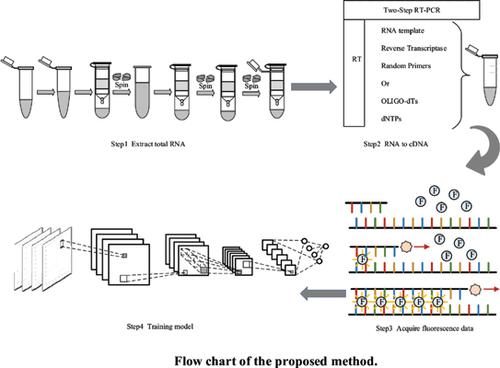Current Bioinformatics ( IF 2.4 ) Pub Date : 2021-06-30 , DOI: 10.2174/1574893616666210212084839 Di Gai 1 , Xuanjing Shen 1 , Haipeng Chen 1

|
Background: The effective classification of the melting curve is conducive to measure the specificity of the amplified products and the influence of invalid data on subsequent experiments is excluded.
Objective: In this paper, a convolutional neural network (CNN) classification model based on dynamic filter is proposed, which can categorize the number of peaks in the melting curve image and distinguish the pollution data represented by the noise peaks.
Methods: The main advantage of the proposed model is that it adopts the filter which changes with the input and uses the dynamic filter to capture more information in the image, making the network learning more accurate. In addition, the residual module is used to extract the characteristics of the melting curve, and the pooling operation is replaced with an atrous convolution to prevent the loss of context information.
Results: In order to train the proposed model, a novel melting curve dataset is created, which includes a balanced dataset and an unbalanced dataset. The proposed method uses six classification-based assessment criteria to compare with seven representative methods based on deep learning. Experimental results show that the proposed method not only markedly outperforms the other state-of-the-art methods in accuracy, but also has much less running time.
Conclusion: It evidently proves that the proposed method is suitable for judging the specificity of amplification products according to the melting curve. Simultaneously, it overcomes the difficulties of manual selection with low efficiency and artificial bias.
中文翻译:

基于动态滤波器卷积神经网络的实时PCR熔解曲线的有效分类
背景:熔解曲线的有效分类有利于衡量扩增产物的特异性,排除无效数据对后续实验的影响。
目的:本文提出了一种基于动态滤波器的卷积神经网络(CNN)分类模型,该模型可以对熔解曲线图像中的峰数进行分类,并区分以噪声峰为代表的污染数据。
方法:该模型的主要优点是采用随输入变化的滤波器,利用动态滤波器捕获图像中更多的信息,使网络学习更加准确。此外,使用残差模块提取熔解曲线的特征,将池化操作替换为空洞卷积,防止上下文信息丢失。
结果:为了训练所提出的模型,创建了一个新的熔解曲线数据集,其中包括一个平衡数据集和一个不平衡数据集。所提出的方法使用六种基于分类的评估标准与基于深度学习的七种代表性方法进行比较。实验结果表明,所提出的方法不仅在准确性上明显优于其他最先进的方法,而且运行时间也少得多。
结论:明显证明该方法适用于根据熔解曲线判断扩增产物的特异性。同时克服了人工选择效率低和人为偏差的困难。











































 京公网安备 11010802027423号
京公网安备 11010802027423号